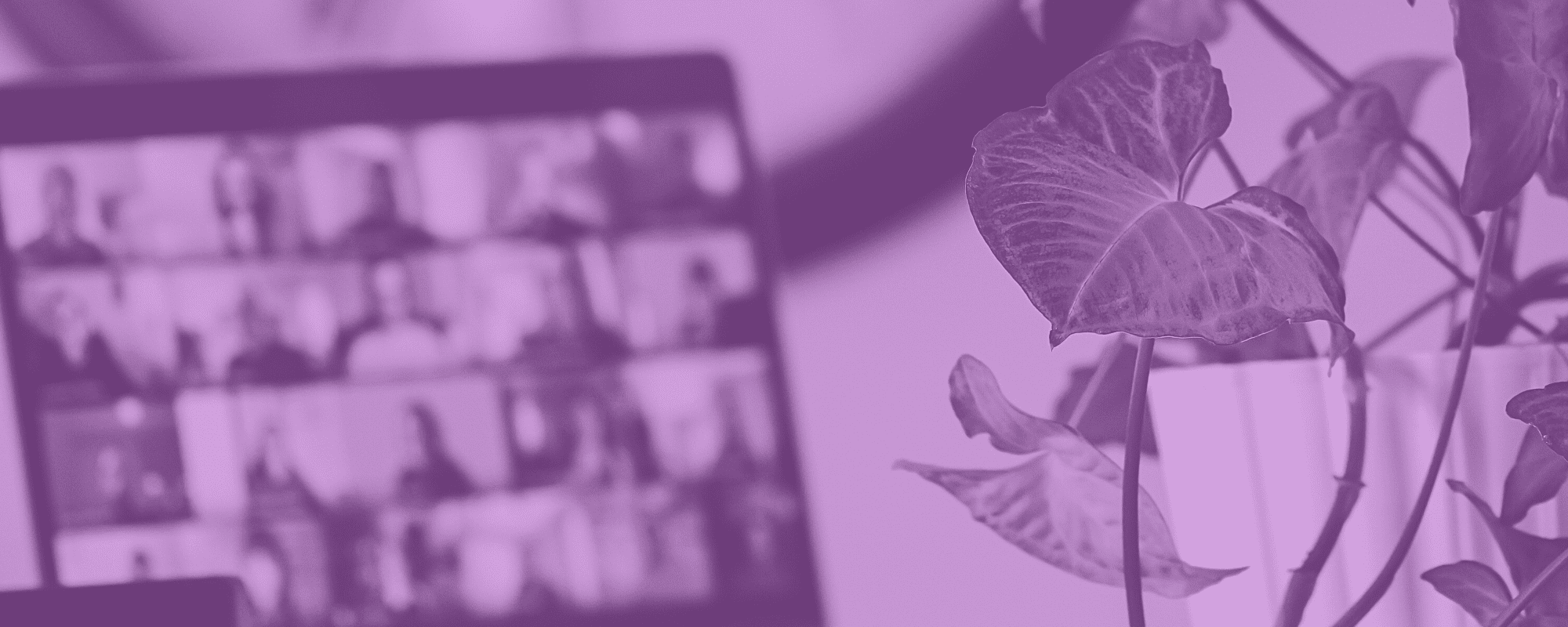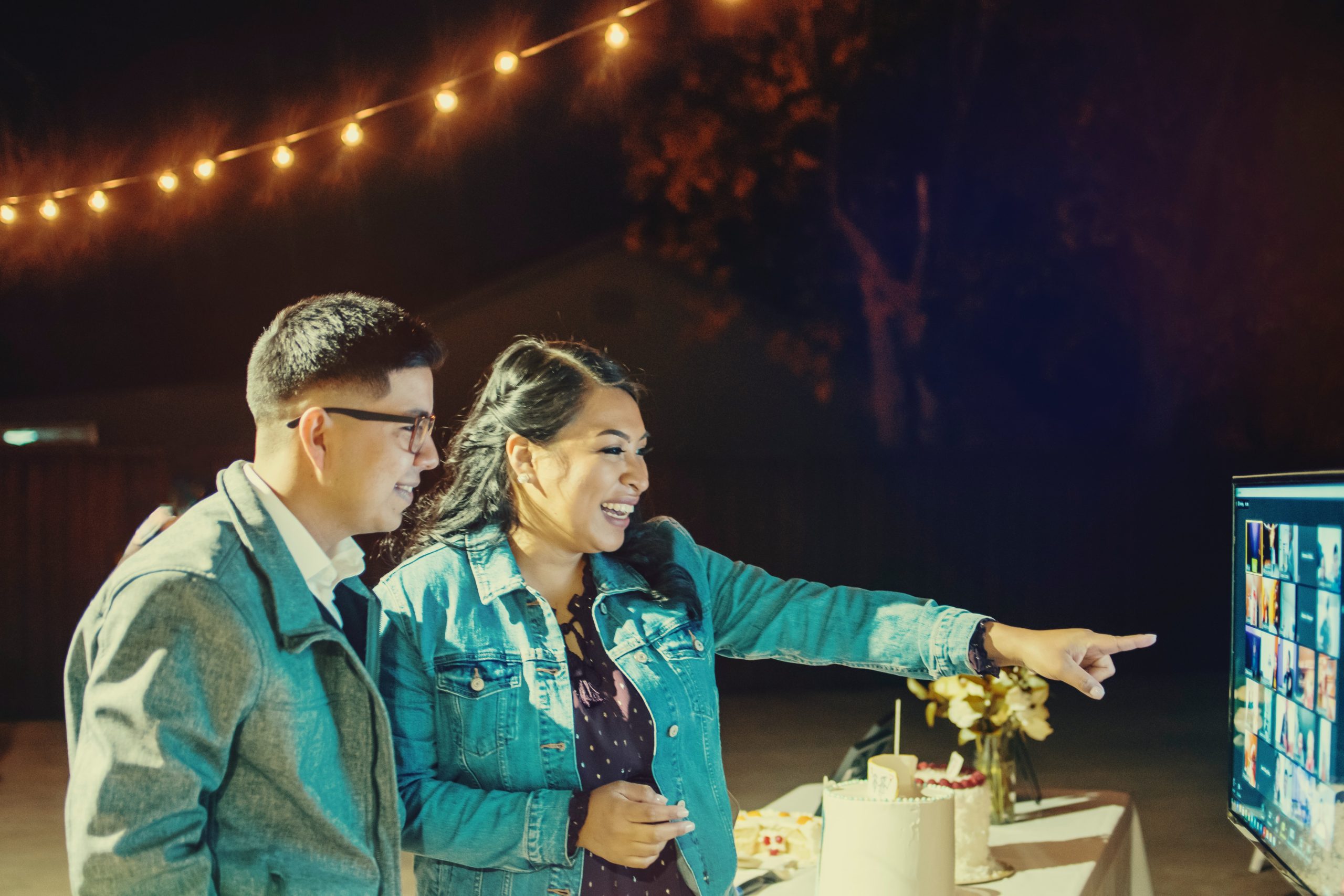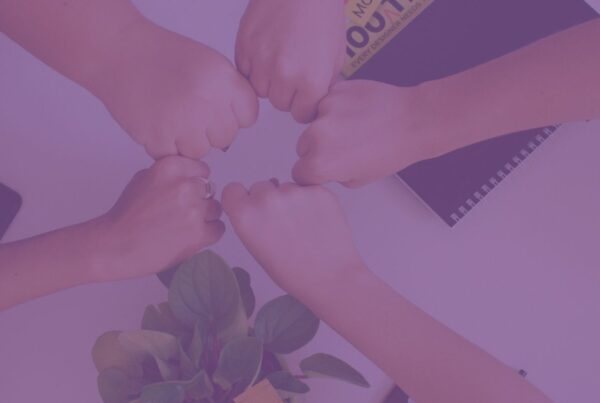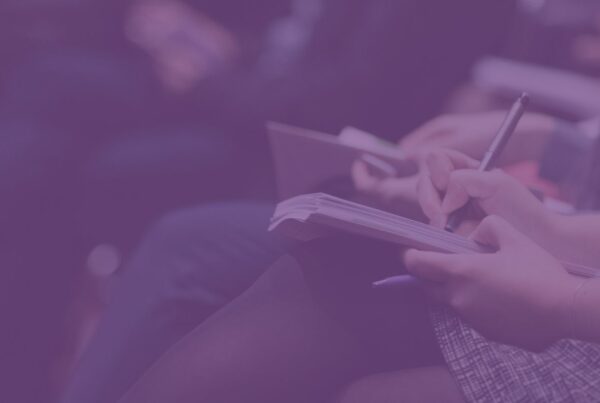This week’s #EventIcons episode is particularly special because Sarah welcomes four of her amazing coworkers from Endless Events to the podcast. They are here to talk about virtual fatigue, one of the first and most talked about challenges of going virtual. As the first point of contact for event planners, Syd Griffith, Karmen Jericevic, John Pistotti, and Ambre Wade know how to decipher what their needs are and how to create solutions for better virtual audience engagement.
Not only are they event professionals, but they also know about all the ins and outs of working remotely. They’ve learned to overcome virtual fatigue long before most people even knew what it was! Once the Endless co-workers started bouncing ideas around, there was no stopping them. The result is one of the liveliest and most interactive #EventIcons episodes so far. Without further ado, meet the charming Endless Events team!
Where Does Virtual Fatigue Come From?
After brief introductions of today’s guests, Syd makes an opening statement about today’s topic. She believes that virtual fatigue existed well before the pandemic. “People were spending so much time on some kind of screen. Then, it became a necessity as an alternative to not being able to gather. A lot of online experiences still feel like you’re just watching a recording.”
John builds on Syd’s opinion. “It’s not just staring at a screen, but also being on camera that is additional stress. Clubhouse has had this meteoric rise. One of the great features about it is there is no video component of it. People can be listening while they’re doing something else. They don’t have to worry about being on camera. Maybe moving some of those conversations over to audio-only is another way that we can start to curb some of the virtual fatigue.”
Ambre talks about the effect that monotony has on people. “Where a lot of the virtual fatigue comes from is not really being a part of the experience and the same mode of communication. People are looking for new and creative ways to pass along information without just being a spectator.”
And finally, Sarah brings up a very important point: people get socially fatigued all the time. But when talking about virtual versus in-person, costs and benefits differ. “At in-person events, you got the benefit of being in the room with people and you could be quiet. On Zoom, you don’t have the opportunity for silence. It’s super awkward. You can’t just look at people and have that white space.”
Audience Engagement Combats Virtual Fatigue
Next up, the Endless Events dream team talks about the most powerful weapon against virtual fatigue: virtual audience engagement tricks. First off, Syd highlights the power of gamification. “Making it exciting to contribute and there being some kind of result of your having provided input.”
Personalization Goes A Long Way
John offers some practical tips that help increase the personalization value of a virtual event. “A lot of times, we will set up the Q&A towards the end of the event or session when people are already dropping off in terms of their energy levels. Why are we waiting to find out what the audience is interested in until the very last 10 minutes of the session? Another thing is just assuming that the audience is going to have Q&As, as opposed to prompting them and giving a shout out to people.”
Sarah agrees with John. “When your audience has a question, you’re personalizing that content to answer that question. Maybe it’s going in a direction you didn’t necessarily think it was going to go in, but it really answers what the audience needs.” She highlights another trend. “A lot of people are emphasizing the need of some sort of MC or moderator that helps drive those things.”
“What’s really important is giving the audience a chance to share personal information so that they can then have conversations with each other,” adds Syd. “It’s a little counterintuitive because the speaker of course wants the majority of the attention, but for the audience to be able to come in and then leave with a new connection that they were able to have a separate conversation with is very powerful.”
Another way to combat virtual fatigue is crowdsourcing. “Before the event even starts, say: ‘Hey, we would love to have you film a video and send us in your questions,'” suggests John. “Now, it’s not just the moderator reading the questions back, but creates a better dynamic. People can see themselves on the jumbotron at the live event.”
Step One: Know Your Audience
As the first point of contact for event planners, Karmen knows just how overwhelmed they can feel. “It is very important to be realistic with your expectations because there are only so many tools out there that can be utilized for the virtual event. You also really need to step away and think about the why. What is really that you’re trying to accomplish?”
“There are certain tools out there where you can create your avatar and then go walk around the conference hall as your avatar and meet people because they’re checking out the same booth as you. If you create different ways for meeting people and connecting, that can help break virtual fatigue up as well,” says Syd.
Karmen interjects and says that it all depends on who your audience is. “We always have to look into who are the attendees. You are young and excited about techy things, but guess what? There are people who are 50, 60 plus. Not everybody is excited to have an avatar. Really focus on your attendees when executing a virtual event. We can make it fun and complicated, but there are also simpler options.”
Attendees Have To Feel Comfortable
Avatar or no avatar, Ambre says it’s all about making the attendees comfortable. “When you’re in a session, possibly have a moderator, fire off some ice-breaking questions to get them comfortable to use all the tools that are in front of them. Because a lot of the solutions that we provide are really helpful only if they’re used to their fullest potential. It’s the same as in in-person events. If you just placed a microphone in an aisle and expect for people to walk up and ask questions, there’d be some hesitance there. They would just not be comfortable with the environment. If you create an environment that’s more comfortable and welcoming, then they’ll really start to make those connections with one another.”
Step Two: Encourage Spontaneity
Next up, the event icons answer the following question from the audience. “Have you seen any fun ways of encouraging spontaneity?” Of course they have! Each of them tackles spontaneity from a different perspective. They explore a myriad of ideas: networking, the importance of unstructured time, welcome kits, and last but not least, fitness and wellness.
Networking For Virtual Events Has To Be Designed
A listener wanted to know how to meet strangers in virtual events without it being creepy. Syd thinks that event planners have to design events with networking in mind. “An important aspect of events with great networking potential is asking your attendees questions way in advance who are they and why are they coming. What are their interests and skillsets? What are they hoping to get out of the event? All of that information can then shape their experience and can help the planners, the moderators, or even algorithms design experiences that introduce these people together.”
Unstructured Time Holds A Lot Of Potential
“How do you really take advantage of remote work in a positive way that allows you to have an enhanced lifestyle?”, asks John. “How many times have you been to a virtual event where they’re encouraging everybody to go take a break outside? You’re not really seeing these kinds of social cues to limit virtual event fatigue,” he adds. Luckily, the solution is simple. “You just have to think about what works in real life to make you happy, excited, and energetic.”
For example, John believes in the healing power of music for virtual events. “The first thing to get cut from event budgets for virtual events was the entertainment aspect of it. That was such a mistake. I always was such a big fan of acoustic musicians and the DJs at networking events. Seeing how we can reintroduce that into virtual events or back into unstructured time is super important to drive energy levels.” Fortunately, such re-introductions are already underway!
Create Immersive Experiences With Welcome Kits
“I’m so fascinated by all the different ideas on how to have an immersive experience,” says Ambre. “Our welcome kits can tie in your branding or they can just be your conference swag. But there are some really cool opportunities to include items that will be relevant to the conference at some random points in time of the event” or during a virtual happy hour, for that matter. “You still have them engaged throughout the entirety of your event.” Some of the ideas that spring to her mind are cooking demonstrations, virtual escape rooms, and tactile things that create excitement in the air. “It’s about being a spectator instead of an actual person in the experience.”
The power of welcome kits shouldn’t be underestimated. Karmen thinks that people are not yet utilizing them to the best of their ability. “That’s where we step in. Rather than sending them a water bottle or a hat, let’s send them something that’s going to make them revisit a certain breakout session or a certain point of the event where they have to figure out why they got it. I think that can also be a component of gamification.”
A Growing Trend: Fitness & Wellness
“Another huge trend that we saw at in-person events was the increasing use of live fitness,” says John. “There was a lot of running clubs in the morning before the keynote or we’d have rooftop yoga. That was something that was just cut from the budget when we went virtual, even though people were having really high levels of satisfaction for this.”
“There’s no reason why we can’t introduce certain social elements, fitness, and wellness back into virtual events. I’m excited to see conferences reincorporate what was becoming a growing trend. People just were scrambling and feeling like they needed to focus on the keynote and all the content aspect of it. We need to get back to what was really successful about live events and ask ourselves how do we introduce some of those elements back into the virtual.”
Conclusion
Even though they covered everything from virtual networking tips to the power of gamification, the animated Endless team members were far from completely exhausting the topic of virtual fatigue. Their time was up, though, and it was time to share their closing thoughts.
John’s advice stands out the most. “We always joke about this ridiculous outfit that I have on. Also, I always do these coffee quotes on my LinkedIn where I try to dress up and look nice. A part of that is also for me to show up for myself and try to keep my energy high. I’m one of the most casual people that you’ll ever meet. But if I was attending an in-person event, I would probably show up looking nice for my clients and myself. So doing things like that, working out early in the morning, getting a big breakfast, all those basic things that we take for granted – make sure that you’re incorporating that into remote work and virtual events.”













